List of safe foods without palm oil
It can be found in dairy products, confectionery, sauces, fast food and baby food.
Palm oil, which is essentially a vegetable fat, has unique properties: it enriches products with a pleasant creamy taste, and due to the fact that it is susceptible to low temperatures (the product melts at a temperature of at least 40 degrees), it extends the shelf life of the product, which contains .
There is information that when palm oil enters and stagnates in the human body, it provokes the occurrence of cancer, causes allergic reactions and pollutes the body.
What is palm oil made from?
Surprisingly, a small publication about palm oil is in the Soviet Encyclopedic Dictionary of 1979.
The same year when Leonid Brezhnev was so confident in his abilities that he got involved in Afghanistan and prepared for the Olympics in Moscow.
A forty-year-old dictionary says that palm oil is a vegetable fatty oil obtained from the pulp of the fruit of the oil palm. At temperatures below 30 degrees Celsius, the oil turns into a solid mass. It is mainly used to make margarine, soap, and candles. The oil palm is a tree in the palm family, naturally. Its homeland is located in the western part of equatorial Africa.
Photo by Achim Halfmann from Pixabay
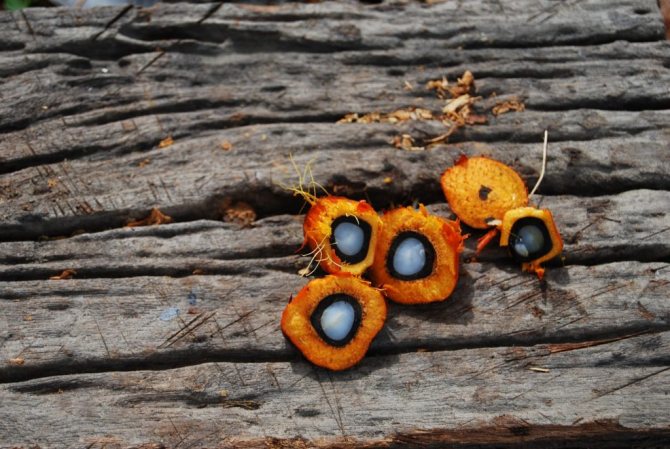
Photo by Achim Halfmann from Pixabay
As a product known to man since ancient times, palm oil has a respectable age. It was first discovered during excavations in the Egyptian city of Abiros. There they established that one of the ancient amphorae contained palm oil.
Since this product was not produced in Egypt, scientists concluded that oil was traded back in the days of the pharaohs. That is, more than three thousand years ago.
In Africa, somehow there were no people willing to cultivate some kind of palm tree. In 1870, the British introduced oil palm from Africa to Malaysia.
Malaysia and Indonesia had already been cultivated by the British, and besides, this territory - within 5-10 degrees from the equator - became an ideal place for growing palm trees.
How to recognize?
Store shelves are replete with an abundance of similar products, varying in price, design, and production.
When choosing purchases, everyone is guided by their own beliefs and does not always focus on the composition of the products:
- Even if the list of ingredients does not include oil itself, this does not mean that it is not disguised under some other definition - vegetable fat, vegetable fat substitute, palmitic acid.
- The low cost should also be alarming - natural raw materials primarily affect the pricing policy.
- The long shelf life of the product can also be determined by the fact that the product contains palm oil.
This is short and general.
Is it really that harmful?
Every person should know how to determine the palm oil content in products. For many, this is a matter of principle and the desire to maintain health. But is the ingredient as harmful as they say? The main disadvantage is the fact that the composition contains a large amount of saturated fats, which lead to obesity and a number of other related problems.
Nutritionists say that saturated fats carry risks because the human digestive system is not designed to handle such stress. As a result, lipid metabolism and the flexibility of vessel walls are disrupted. The body wears out and ages faster. But this is only dangerous if you overuse it.
An additional disadvantage is the appearance of a certain dependence caused by increased taste. As a result, it is difficult for a person to give up his favorite chips, ice cream, candies, semi-finished products or other products.
We also recommend: In which countries is palm oil banned?
Ice cream
The favorite delicacy of adults and children is not only cold and sweet, but also quite high in calories.
Where is he not? The choice must begin by studying the composition written on the packaging. Ideally it should be limited to:
But in reality this does not happen.
In addition to auxiliary additives and colorings, ice cream most often contains palmitic acids or vegetable fats, which confirms the presence of palm oil.
If you buy ice cream in a cafe, you can check it in a simple way - rub a piece in your palms, if a film effect remains, it means that the product contains palm oil.
Oil
Which one to choose? Vegetable oil and butter are most often used for preparing various dishes. If you watch what you eat and don’t chase cheapness, carefully study everything that is written on the package or label. First of all, you need to pay attention to:
- name (must be oil, not a vegetable-cream mixture, product or analogue);
- composition (ideally milk and cream);
- fat content (must be above 70 percent);
- price (good oil cannot cost 30 rubles, a quality product starts at 80 rubles for a standard package);
- compliance with GOST (do not confuse with technical specifications - TU).
How dangerous can palm oil be?
Palm oil and trans fats
These are substances that are formed from unsaturated fatty acids, for example when oil changes consistency from liquid to solid. They are believed to be responsible for excess levels of “bad” cholesterol. However, real palm oil itself is semi-solid (closer to a solid). It is in this form that it is most often used in the culinary industry. However, there are exceptions when palm oil can actually be harmful:
- in the production of margarine, when the consistency of vegetable oil is forced to change with the participation of hydrogen in the hydrogenation process. This is done to make the product aesthetically pleasing and pleasing to the consumer;
- in the production of sandwich spreads the situation is almost similar.
Hydrogenation does produce trans fats. Their structure is unusual for the body, they impede the functioning of the liver and accumulate in the form of cholesterol. Therefore, it is better to prefer natural butter to margarine.
Source of bad cholesterol
First you need to understand the essence of the concept of “cholesterol”. This is a liquid lipid substance, which is found in the blood by default, helps cells keep their shape and produce the necessary hormones. However, it should not exceed the permissible limit. If this happens, then the same plaques are formed that narrow the blood vessels and reduce their elasticity.
To transport cholesterol between cells, special substances are needed - lipoproteins. They come in high and low density. The former are responsible for transporting cholesterol to the liver and excreting it from the body. Therefore, they are often called “good” cholesterol. The latter (“bad” cholesterol) transfer substances from the liver to other cells, forming fatty deposits on the vascular walls. An increase in low-density lipoprotein is most often associated with the intake of excess saturated fat.
Palm oil does contain them, coming from the saturated fatty acids listed above. Therefore, it is better for people with lipid metabolism disorders and existing cardiovascular diseases not to consume palm oil. However, as we remember, oil also contains healthy unsaturated fatty acids. They promote the formation of “good” cholesterol. For this reason, a healthy person can easily use this oil in food. It is only important to ensure that your diet does not consist solely of fats, but also includes proteins and carbohydrates.
Don't forget that raw palm oil is rich in vitamin E (hence its orange color), which means it is good for blood vessels. The antioxidant properties of the vitamin not only help eliminate free radicals, but also protect oxygen-sensitive unsaturated fats, helping them to be absorbed. Thus, cholesterol levels are stabilized.
Milk
People of all ages know about the beneficial properties of milk. However, this drink only brings benefits if it is a natural product. Not everyone can buy milk from a neighboring farmstead, and the stores offer such an abundance of milk from different producers that it’s dizzying.
It is preferable to opt for milk from a well-known manufacturer.
Study all information contained on the label.
The more components there are that are little familiar to you, the more doubtful the naturalness of the proposed product is.
Baby cereals
It is when choosing baby food that we take great care and carefully study what we are going to purchase. If palm oil can harm an adult, what about children?
Another thing that confuses this issue is that palmitic acid is found in breast milk in a certain amount, why is baby food with this component not recommended for consumption? True.
A component is added to the product to improve taste and extend its shelf life. Despite all this, instant baby cereals and mixtures today increasingly contain this additive, which must certainly be reflected in the product information.
If you value your baby’s health, it is better to avoid porridge that contains pure palm oil, palmitic acid or vegetable fats.
Chocolate
Everyone's favorite and very healthy delicacy, chocolate is one of the leaders susceptible to counterfeiting. This is dictated by the fact that the production of a natural product is a financially expensive process, and it is also problematic to provide raw materials.
This creates the need to use analogue or substitute components. Increasingly, soybean or palm oil, fats or vegetable oils are used in production to replace cocoa butter, which is responsible for its noble taste and beneficial properties.
When purchasing, pay attention to:
- Components;
- the presence of preservatives (the more, the more undesirable the purchase);
- shelf life (the shorter the better);
- compliance with GOST;
- manufacturer.
Read more about the latter. People get used to specific manufacturers or brands, but today the fact of brand falsification is becoming widespread: for example, consistent style and design, but an insignificant difference in the name of the product. You need to be very careful.
Cottage cheese
Curd masses, cottage cheese or baby curds. All this should be based on natural cottage cheese made with natural milk, and not powders, substitutes and analogues.
Cottage cheese is a product obtained as a result of the process of fermenting milk and, in fact, is perishable. Natural cottage cheese has a shelf life of several days, not months.
All this information must be reflected on the packaging or label. In reality, this is not always what happens. We read the ingredients and, if in doubt, refuse to purchase.
Candies
Chocolates are a popular sweet. Their production should be based on the same cocoa butter as in chocolate bars. There are a huge number of manufacturers of this delicacy today; you need to understand that not all of them are willing to pay a high price for natural raw materials, especially since this will directly affect the market value.
Buying expensive sweets is sometimes beyond the means of even the average consumer, and not everyone is ready to overpay for the “same” sweets.
However, when buying candies with vegetable fats, soy or palm oil, be prepared for the fact that the product is not natural.
Sweets have a fairly short shelf life. Depending on the type of filling - from two weeks (bird's milk) to six months (fondant fillings). The longer the shelf life, the fewer natural ingredients in the product.
Some stores offer candy tasting. You can distinguish natural chocolate from false chocolate not only by its non-specific taste, but also by the fact that soy or palm sweets will not melt in your hands and mouth.
Cookie
Any cookie is essentially a type of baked product. The production is based on fats and oils. In addition to the dietary uselessness of the product, it is difficult to find good quality cookies today. Flavoring additives and the presence of a rich list of ingredients with unfamiliar words should alert the buyer.
Please pay attention to the expiration date; good cookies cannot be stored for more than six months; the fresher the production date, the more preferable the purchase.
A dairy product, or rather its derivative, cheese goes through long stages of production before it hits store shelves. Natural fermentation of cheese is a slow process, and market conditions require products that bring immediate profit. Food additives and other accelerators help the cheese “ripen” in a short time and make it non-perishable over time.
If the cheese is accompanied by information about the manufacturer and composition, we carefully study the data; if not, we pay attention to the cost: the higher it is, the greater the chance of purchasing quality products.
The presence of unnatural components can only be determined experimentally.
At home, natural cheese becomes soft and shapeless, with the addition of palm oil it becomes dense and drops of water appear on its surface.
Natural production
For each type of food product, there are several hundred and hundreds of thousands of producers - from large corporations to private firms with a small turnover. Few of them work on their own raw materials; they are mainly imported from countries around the world.
The lion's share of buyers gets used to “their” manufacturer, who suits them in terms of price and quality. The less information about the manufacturer and the more dubious it is, the greater the chance that the buyer will pass by the shelf with its products.
Disputes about the dangers and harmlessness, and sometimes the benefits, of palm oil have been going on for years. Despite this, the percentage of its use in the food group of products is increasing.
It is important that in practice it often turns out that theoretical data on the production of a particular product do not always correspond to what is declared.
In this case, the consumer only has to take the manufacturer’s word, as they say.
The process of identifying palm oil or its derivatives is complex.
After all, definitions are often disguised by terms that are incomprehensible to the average person, and the presence of palm components can sometimes be determined only in laboratory conditions.
However, in an unclear situation, the principle should work: if in doubt, don’t buy. And make it a rule to study the composition and components of everything you buy. Unfortunately, only a third of all buyers do exactly this. Take care of your health yourself.
The harm of palm oil
In recent years, there has been much controversy surrounding the use of palm oil in the food industry. There are supporters of a complete refusal to use this product, who prove that the harm of palm oil is indisputable, and, conversely, their opponents, who argue that it is not so harmful, and all talk about its harm is a ploy of interested parties. You can understand this issue by analyzing all the available information.
What exactly is palm oil? This is one of the types of vegetable oil that is obtained from the fruits of the oil palm, or rather, from their fleshy part. The largest producers are Malaysia and Indonesia; they import the lion's share of palm oil. In fact, palm oil is not an oil at all, but a fat, the same as beef, for example. And the appetizing name “butter” is so as not to “scare away” us, consumers.
List: which products contain palm oil
Palm oil is very rich in saturated fat. It can be contained in almost all store-bought products where fats are usually added. The list of such products is extensive.
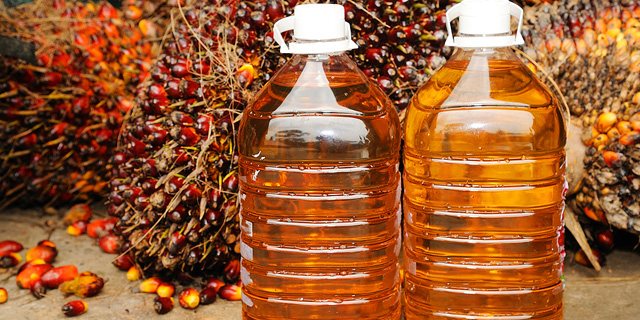
It can be:
- confectionery - chocolate, cakes, croissants, chocolates, cookies, gingerbreads, chocolate bars, waffles, so they are relatively cheap;
- dairy products (yogurt, cheeses, sour cream, cream, curd desserts, fermented milk drinks, glazed cheese curds);
- semi-finished products (dumplings, dumplings, khinkali, pasties, cutlets);
- instant food products (instant noodles, flavorings);
- ready-made sauces (mayonnaise and others);
- deep-frying (when heated to 200°C and above, palm oil, as well as soybean and corn oil, turns into a carcinogenic substance).
Video: The whole truth about palm oil - the benefits and harm. Doctor's advice
Even in cheap baby food, manufacturers can use palm oil as a raw material.
Palm oil production
The production of palm oil is concentrated in tropical countries (Malaysia, Indonesia, Africa), where its production is quite harmful to the environment.
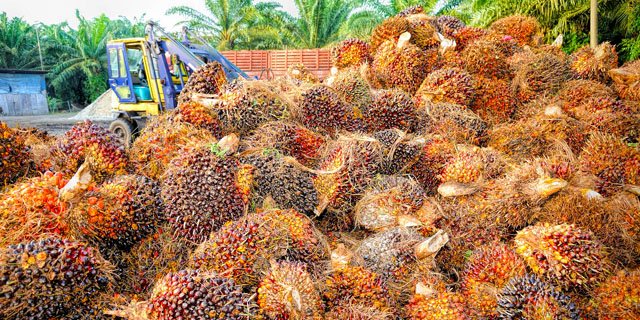
Oil palm cultivation leads to the deforestation of tropical forests in Southeast Asia and Africa. This leads to deforestation, climate change and animal mortality.

And there is even a “story” that being the owner of an oil palm plantation is higher in profitability than owning an oil well.
Palm oil: benefits and harm to human health
Attention! Palm oil causes cancer . A report by the European Food Safety Authority (EFSA) has declared palm oil to be the most carcinogenic vegetable oil. The report suggests that palm oil becomes more carcinogenic when heated to temperatures above 200°C. Of course, consumers do not eat spread heated to 200°C, but high temperatures are used in production. This is to get rid of the natural red color of the palm oil and neutralize its odor. When we digest foods with palm oil, the glycidyl esters break down and release glycidol, a compound believed to cause tumors.
Harmful products
At the same time, as the Izvestia newspaper writes, in 2020, the import of palm oil to Russia in the first six months increased by almost 20% and amounted to 550 thousand tons. This allowed it to move to second position in the top 3 most popular imported goods among food products.
Experts explained the popularity of palm oil due to its price advantage over plant counterparts.
Palm oil is five times cheaper than olive oil and 10% cheaper than its closest analogue, sunflower oil.
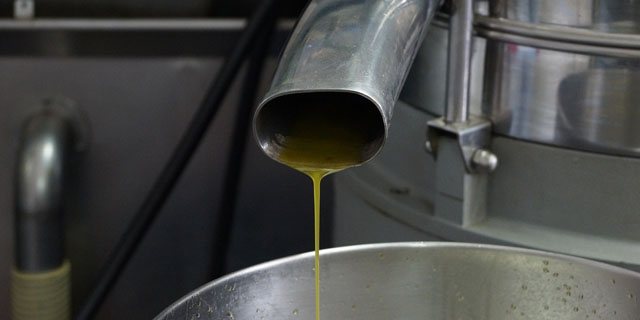
Today, manufacturers are trying to reduce costs at all stages of work. The unpleasant thing is that palm oil is often used to make products that were originally supposed to use a more expensive type of oil. This cannot but affect the consumer properties of the manufactured products.
How to Test for Palm Oil in Olive Oil
The freezing point of palm oil is about -30°C, so if the olive oil you buy contains it, it will not freeze in the refrigerator.
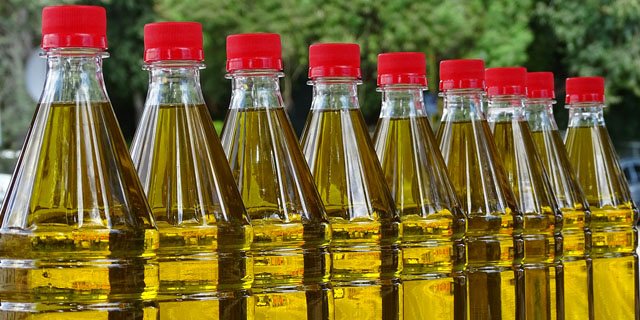
Completely natural olive oil, when cooled, gives a sediment in the form of white flakes and changes density; when thawed, it returns to normal completely. This is the only way to check the naturalness of olive oil at home.
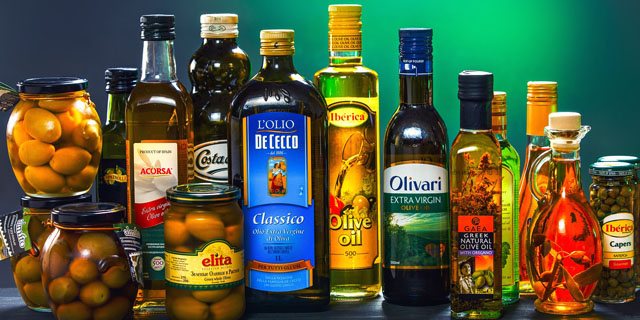
It is obvious that palm oil does not in any way correspond to a healthy lifestyle and does not bring benefits to our health.
Video: Palm oil - what products it contains, benefits and harm to human health
A comment
Manufacturers can create very cheap products based on palm oil. Palm oil, despite all the hype around it, is quite suitable for consumption in moderation and there is no point in throwing away all products that may contain it. But you need to keep in mind that if the product packaging indicates that the composition contains vegetable fats or a milk fat substitute, then this may just mean the presence of palm oil, and everyone will decide for themselves whether it is worth further risk your health.
Why is palm oil so common?
Palm oil has become widespread because it has the ability to improve the taste and appearance of the product, as well as significantly increase shelf life.
Palm oil has a pleasant taste and aroma of milk cream, and therefore makes the products to which it is added tastier.
In addition, its addition to food products reduces their cost.
One of the key properties of palm oil is its high melting point. Of course, it is beneficial for manufacturers to add it to their products. After all, it’s good when there are neat pastries and cakes on display that don’t flow and don’t lose their shape even in hot weather, or cheese that is beautiful and tasty, but at the same time significantly cheaper than its dairy counterpart, or condensed milk, which has never even seen milk. .
It has also become indispensable when preparing fast food. Other vegetable fats (for example, the sunflower oil we are familiar with) have a very low “smoke point” - this is the name of the process when, during heating, oxidation products of unsaturated fatty acids, harmful to the human body, begin to actively form in the oil. In turn, palm oil, due to its high content of saturated fats, can be heated to a higher temperature without forming carcinogens. French fries and other fast food products (the same patties for hamburgers, cheeseburgers, etc., as well as potato chips) are most often fried in palm oil.
It would seem wonderful - carcinogens are not formed. Where is the harm in palm oil? However, heat resistance also has a downside - once palm fat enters the human body, it cannot be processed, since the temperature of the human body is lower than the melting point of the oil. It acquires the consistency of plasticine, which makes it much more difficult for the body to process it, and, as a result, “settles” on the walls of blood vessels.
Which countries ban palm oil?
Although the harm of palm oil is still a topic of debate, there is another issue related to the impact of palm oil on the environment
.
Most of the world's palm oil supply is produced in Indonesia or Malaysia, and palm oil plantations are a leading cause of deforestation. The palm oil industry is leading to the destruction of tropical forests, particularly habitats for endangered species.
Its production has also been linked to increased carbohydrate emissions, displacement of indigenous populations and labor exploitation.
What are the harms of palm oil?
Due to the high content of saturated fatty acids in palm oil (50%), it significantly increases the level of cholesterol in the blood. For comparison, in olive and sunflower oil these figures are 10% and 14%, respectively. Without harm to health, the consumption of foods containing saturated fatty acids should not exceed 10% of the total calorie content of the menu.
Palm oil is especially harmful when combined with carbohydrates, that is, in sweets.
In 2005, the World Health Organization thought about the dangers of palm oil and officially recommended reducing its consumption as one of the ways to prevent cardiovascular diseases.
In addition, palm oil is also harmful because it can significantly enhance the taste of the product to which it is added. A cake or candy containing palm oil will seem unusually tasty to you; you will want to eat it again and again, which can lead to overeating and, as a result, obesity.
Among other things, the body will receive a dose of saturated fatty acids above the permissible norm, and this will already result in the accumulation of cholesterol.
Another cautionary factor in consuming products containing harmful palm oil is that, in the pursuit of profit, manufacturers add too much of it to the food they produce. After this, it is stored longer and looks more appetizing, for example, like some ready-made muffins and rolls that have become so popular. And you, again, receive a shock dose of the product, which contributes to the accumulation of cholesterol. Therefore, be careful and read the ingredients on the label. If the manufacturing company has nothing to hide, it will not hide behind the broad concept of “vegetable fats”, but will indicate which ones were used. And it’s up to you to decide whether to buy such a product or not.
TOP 10 products containing palm oil
If you make a list of which products contain palm oil in Russia, you will need at least a dozen A4 sheets. This is due to the fact that the ingredient is used almost everywhere. Below is a list of products in which it is found in the greatest quantities.
The TOP 10 includes:
- Instant noodles. Here palm substance is used during roasting. Additionally, monosodium glutamate is added to the composition, which enhances the taste, but is harmful to the body.
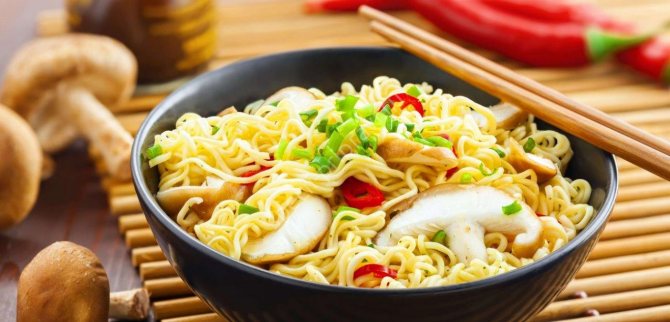
- Cottage cheese and cottage cheese products. When considering where palm oil is found, one cannot ignore cottage cheese and all its “derivatives”. In these products, the ingredient is used as a budget replacement for milk fat.
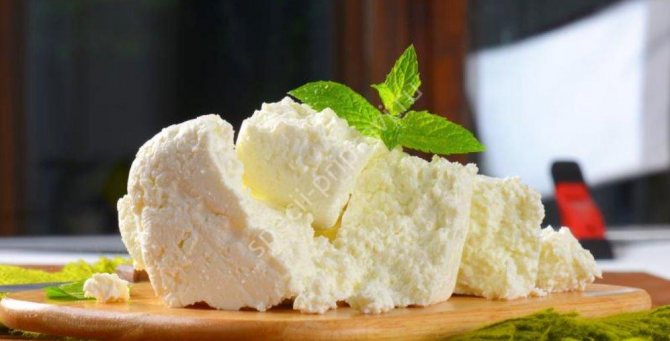
- Cheese products. Recent studies have shown that almost 75% of cheeses contain a dangerous ingredient.
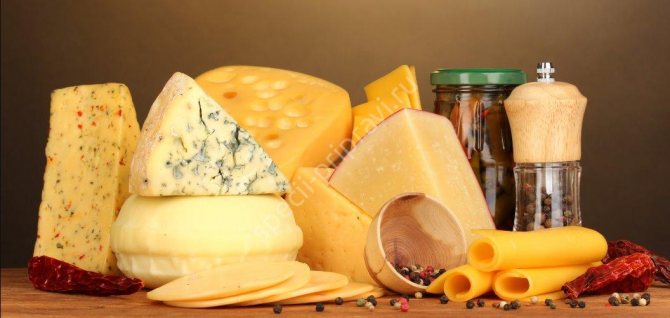
- Ice cream. Sweet tooths and caring mothers should remember that palm oil is often added to this sweetness. And the cheaper the product, the higher its content.

- Margarine. Water and vegetable oil are used in its production. In many cases, the latter is replaced by palm. As a result, almost all baked goods on the shelves contain a potentially dangerous ingredient.
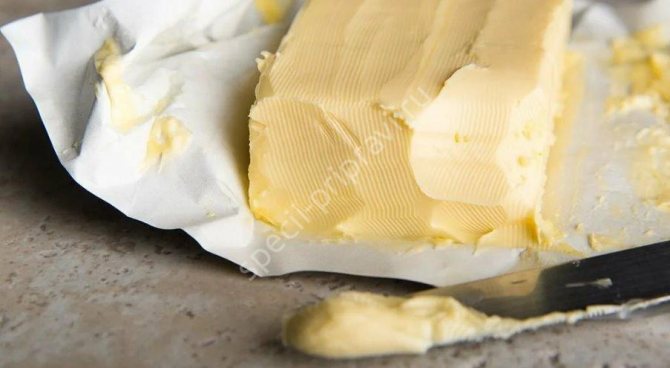
- French fries. The component in question is contained in frying fat used when frying potatoes.
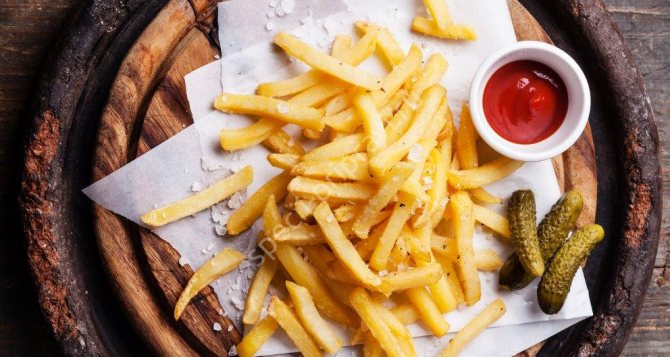
- Chocolates, bars. When considering the question of where palm oil is contained, one cannot ignore chocolate sweets, where the volume of this component is very high. This also applies to other “goodies” - cookies, waffles and icing.
We also recommend: Tan and Ayran - what's the difference?

- Breakfast cereals and muesli. As with fast food noodles, the products are fried with a cheap substitute. This means that healthy breakfasts may not be very healthy.
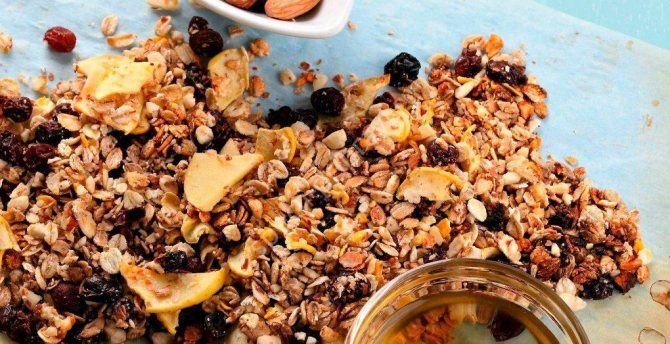
- Bread. In the manufacture of baked goods, a cheaper substitute has long been used.
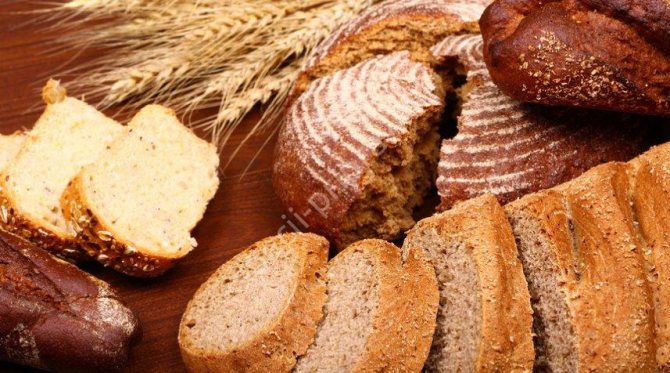
- Snacks (chips, cheese balls, crackers, etc.).
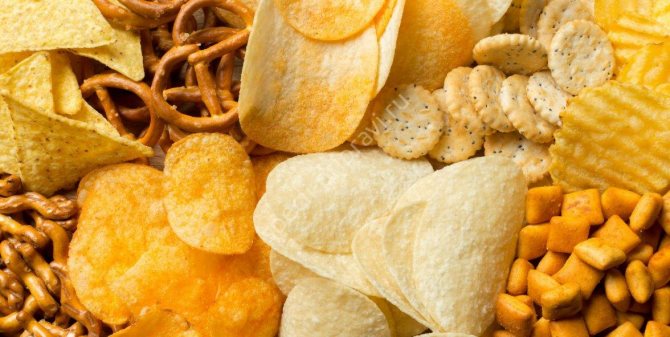
The list of products that contain palm oil can take a long time. The buyer's task is to be careful when choosing a product and try to minimize the consumption of harmful ingredients.
Since there is a lot of talk about the dangers of this product, many are interested in the question: is palm oil banned in other countries? We talked about this in a separate article.
Harm of palm oil for children
Is palm oil used in baby food? The answer is clear - yes, they do. And all because natural cow's milk is significantly different from human breast milk and it is not always possible to give it to the baby. To avoid allergic reactions, manufacturers replace animal fats in mixtures with a combination of vegetable oils - sunflower, corn, soybean, including palm. However, palmitic acid, which is contained in palm oil, is poorly absorbed by the child's body.
Human milk also contains palmic acid, but there are other components that help the baby process it.
This is again due to its high melting point: a child’s body is simply not able to, so to speak, “remelt” palm oil, much less extract useful substances from it. In addition, such mixtures have a significantly enhanced pleasant taste, and therefore the child develops a dependence on the product with palm oil. They like it more, it seems much tastier, and the baby will simply refuse healthier and more natural types of food in favor of products with harmful palm oil. As a result, you will be forced to buy a certain product, also increasing the profit of the manufacturing company. And it would not be a pity to increase the profit, if at the same time the child’s health did not suffer...
How is palm oil harmful to health?
The main harm is that palm oil requires a temperature of 40+ degrees to melt. And since our normal body temperature is 36.6°, when it enters the stomach, palm oil remains in the state of plasticine or fondant. It is poorly digested and remains on the mucous membrane of the internal organs.
Palm oil contains 6 times less vitamins and healthy fats than sunflower oil. It is high in saturated fat, which increases the level of “bad” cholesterol in the body, and with it the risk of developing atherosclerosis (clogging of the arteries).
Since palm oil is most often used in the manufacture of confectionery products, which themselves are harmful to the body due to their extremely high content of carbohydrates and sugar, the negative effect is almost tripled! Hence the problems with excess weight, metabolic disorders, increased subcutaneous fat and the cardiovascular system. Moreover, palm oil in sweets and chocolates can almost cause drug addiction .
Palm oil is especially dangerous in baby food . The immature gastrointestinal tract system is simply not able to digest such a complex product, which leads to rapid obesity.
- Find out more: 12 Sources of Healthy Fats

What foods most often contain palm oil?
Unfortunately, palm oil can be used during the preparation of almost all foods. It is used as an alternative to milk fat, and primarily it can be found in butter, margarine, spreads, condensed milk, dry cream, sour cream, ice cream, cheese, and other dairy products.
In addition, due to its use as a cheaper alternative to animal fats in the confectionery and bakery industries, palm oil is added to a variety of baked goods - buns, cookies, crackers, salty and sweet crackers, muffins, rolls, pastries and cakes, and so on. Also in the “risk zone” are various sweet spreads - chocolate, nuts, vanilla and the like; chocolate itself is no exception, as well as icing, chocolate and wafer bars. Chips and fries have already been mentioned.
By the way, you can prepare chips yourself without using not only palm oil, but also any other “harmful substances”. How to do this - read the article “How to make chips in the microwave: simple and tasty.”
List of palm oil products
The triumphant march of palm oil through the Russian food industry began after trade sanctions imposed by the Ukrainians in retaliation for their intrusive active intervention in the events of 2014.
Since 2014, palm oil has been added to almost all products in order to reduce costs and increase shelf life.
Where palm oil is placed is almost mandatory:
- dairy and fermented milk products, including cottage cheese, yogurt, cheeses, butter;
- bread, pastries and other bakery products;
- baby food;
- cheap chocolate;
- chocolate spread and other “spreads”;
- fast food;
- ice cream;
- mayonnaise;
- margarine;
- semi-finished products: cheesecakes, dumplings, pasties, dumplings.
Simply put, at the supermarket we will get our share of hydrogenated palm oil (trans fat) one way or another.
How to minimize the harm of palm oil
Of course, try not to buy products containing it. This is difficult, considering that palm oil has captured the hearts of domestic producers. However, it's worth at least trying.
- First of all, read the label - sometimes the presence of palm oil is specified.
- The presence of nameless “vegetable fats” in the composition should alert you.
- Buy products made according to GOST, and not according to TU.
- Do not buy confectionery products with a long shelf life (months).
- Give up fast food - it will be beneficial in any case.
- Ideally, buy dairy products from friends in the village, and bake buns and cakes at home - they taste better that way.
Once upon a time, in a program about the dangers of palm oil and vegetable fats in general, they talked about a simple way to check chocolate for the presence of palm oil - hold a piece of chocolate in your hands. If it does not melt in your hands (and often in your mouth), this is a sure sign of the presence of palm oil.
Of course, it is difficult in the city to provide yourself with high-quality homemade products, but by being careful with your purchases, you can try to protect yourself from the “endemic” and so harmful palm oil.
How to determine if a product contains palm oil
There are a number of criteria to identify a dangerous ingredient in a composition. Basic moments:
- Products containing palm oil must have this information on their labels. But the absence of this data is not a guarantee of safety. The name could have been replaced with palmitic acid or a vegetable fat substitute.
- Long shelf life. This sign is considered one of the main ones.
- Low price. Products made from original raw materials usually have a high cost. If it is too low, it should raise suspicion.
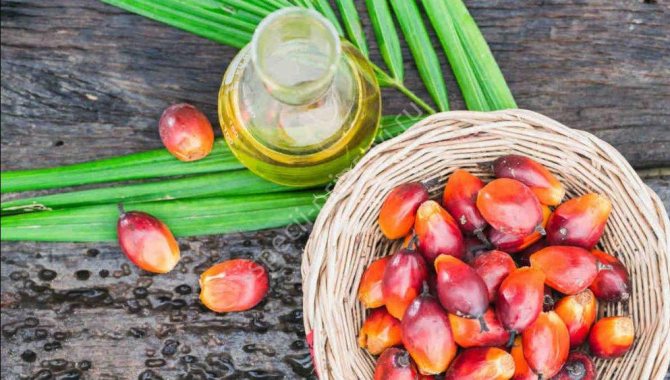
You can determine which products contain palm oil at home using special experiments. Let's highlight recommendations for several products:
- Sour cream. The feeling of a greasy film on the tongue indicates that the composition contains the ingredient in question. If sour cream is left on the table at room temperature, over time it will become covered with a yellow crust. At the same time, the smell and taste do not change. Natural products will definitely turn sour.
- Hard cheese with palm oil is easily recognized by its soapy taste. If, when cutting, the product crumbles, is poorly chewed and is too hard, the manufacturer has overdid it with a harmful additive. This product quickly weathers and cracks in the open air. Another way to check is to leave the product in the sun. If drops of oil appear on it, this indicates the presence of a palm component in the composition.
- Ice cream. As an experiment, leave it on a plate at room temperature and observe the speed of melting. If the process takes too long, the ice cream contains palm content.
- Butter. The main symptom is a sticky feeling on the tongue. In addition, at room temperature, natural oil softens, while counterfeit goods remain hard for a long time.
We also recommend: What is the difference between margarine and butter?
Using a similar principle, you can determine what palm oil contains in relation to other products.
About the benefits of palm oil
Is there anything beneficial about palm oil? To be fair, it should be said that palm oil contains large amounts of vitamin A, which is responsible for good vision, strengthens bones, is an antioxidant, and helps improve the condition of hair, skin, and nails. For comparison, the content of keratinoids in palm oil is 15 times higher than in carrots! However, in order for the human body to absorb this useful substance, it is necessary to be able to process the product containing it. As stated earlier, palm oil is poorly absorbed due to its high melting point, and therefore it is difficult to extract beneficial properties from it for the body.
There is a way out of this situation - processing of palm oil, during which its “liquid” oleic component is separated from the “solid” stearic component. Palm oil from its oleic component is more useful, is absorbed well by the body, and is also used for medicinal purposes. However, it costs several times more. And certainly not this kind of oil is added to food products, but regular oil, without processing, otherwise the cost of such products would be extremely high.
Unfortunately, you and I cannot escape palm oil and the harm it causes. Children will not stop eating chocolate and ice cream, and it is difficult for us to imagine the morning without a sandwich with butter and cheese. However, we should try to reduce its amount in our diet as much as possible.
Where is palm oil mined today?
Currently, the regions of Malaysia and Indonesia lead in the supply of palm oil and provide about 85 percent of the oil produced in the world.
What’s interesting: the palm tree was originally used as an ornamental plant. Something like Soviet ficuses in tubs. They willingly grew where the gardener stuck them. The main thing is that it doesn’t get covered in snow.
In the wild, oil palm seeds can germinate unpretentiously even after a few years. But in Indonesia and Malaysia, where there are no longer alleys for beauty, but greenhouses for production, special stations have equipment for accelerating the process of seed germination.
Who understands: the process is somewhat reminiscent of our version of preparing cucumber and tomato seedlings for sowing. The main thing is to maintain a constant high temperature in the stations.
The germination period is reduced to 90-100 days. There is no need to describe the entire simple but painstaking technological process. As a result, the tree produces fruits, and oil is pressed from the fruits.



